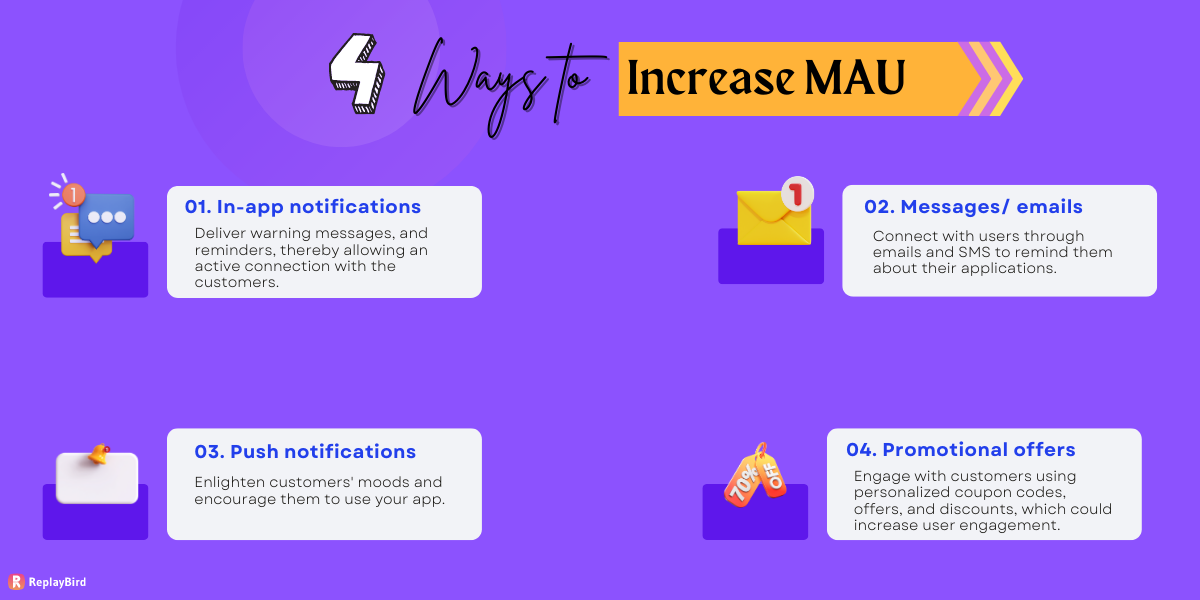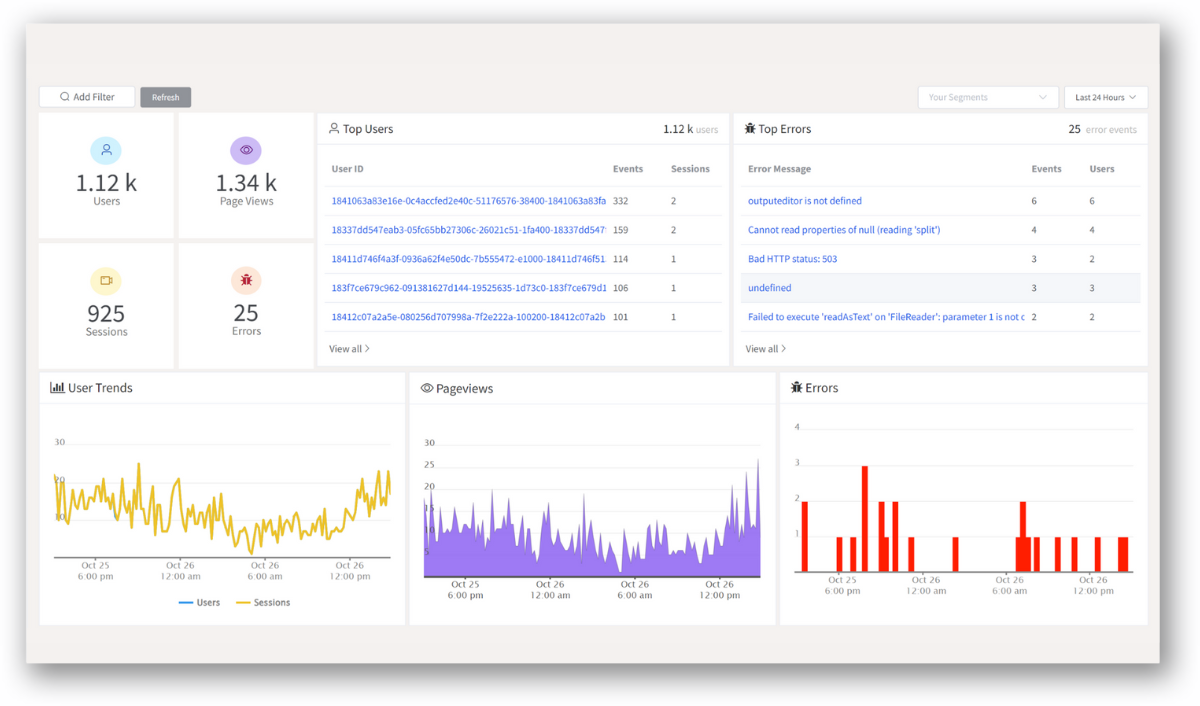Monthly active users MAU defines the efficiency of the company's performance whereby it measures the general standing of an online business.
- What are monthly active users (MAU)?
- Characteristics of monthly active users (MAU)
- Calculating monthly active users (MAU)
- Challenges of monthly active users (MAU)
- Ways to increase monthly active users (MAU)
- How do I analyze the rate of monthly active users (MAU)?
- Changes in monthly active users (MAU)
What are monthly active users (MAU)?
MAU is a metric that measures the unique users who have been engaged with the application software or website for the past month.
It is a key performance indicator which measures using a predefined period of 30 days.
Companies measure MAU through user accounts, email addresses, or unique identification numbers.
It could be a result of the effectiveness of the user experience provided by the company.
Since it is a key indicator, the company pays much attention to its details so as to attract investors.
Investors note the MAU factor before investing in a company since it holds details of the company's efficacy.
Importance of monthly active users (MAU)
1. Business point of view
MAU is beneficial for knowing the company's performance.
High user engagement would indicate that the product is liked and appreciated by the customers.
It has two aspects:-
- Customer engagement - MAU specifies how well a customer is engaging with the company's website.
- Retention - A good response from the customers increases customer loyalty, thereby enhancing customer retention.
2. Measuring business health
MAU is a useful metric for assessing the success or failure of strategies implemented by the company. As a result, it provides an overview of the general health of the business.
Why calculate monthly active users (MAU)?
Tracking the number of unique users becomes vital for social networking businesses, or any other company for that matter, as it portrays the responses from customers.
Here is where MAU comes into play, acting as a criterion or setting a standard of performance for the business.
The number of active users helps in identifying the engagement level of customers, which ultimately shows their interest in the products or services offered by the company.
Such measures of responses help companies in taking further steps in their operations be it maintaining the same standards or finding the need to develop.
Characteristics of monthly active users (MAU)
i) A quantitative measure
MAU is a quantitative metric and it eliminates the quality aspects of measures such as intensity, depth, etc.
The nature of the company determines the method of MAU calculation.
For instance, social media platforms could measure the active users based on the activity time or account holders on their site, whereas online shopping websites would measure active users based on the involvement and purchases of the customers.
These numbers determine accurate information, which acts as an important metric for assessing the efficiency of the company.
ii) Key performance indicator
MAU is a key performance indicator that shows how well a company is performing to meet its objectives.
It specifies the failures and successes of the company in a quantitative sense.
This measure acts as an aid in achieving the long-term goals of a business.
Moreover, it helps in taking decisions based on the collection of data, analysis, and interpretation.
iii) Straightforward metric
MAU shows an accurate number of users who are active, thereby being straightforward in its measure.
This aids in a quick analysis and decision-making process through its effortless results.
iv) Overview of business health
MAU denotes the general health of a business since it measures the outcomes of strategies employed by the company.
A high number of users indicates the good performance of the product, whereas a low number of users shows the need for improvement in the product and strategies.
Calculating monthly active users (MAU)
The method of calculation of MAU varies from company to company.
Its variability arises from how a company views its active users.
Each company has a different point of view based on its engaged users and measurement of success.
Furthermore, the nature of the business also influences the calculation of MAU.
Let us look at an example to understand this concept better.
#1 MAU of WhatsApp
WhatsApp calculates its MAU from users who have sent or replied to messages in a period of 30 days, i.e., a month.
It does not include reading messages.
#2 MAU of Instagram
Instagram calculates its MAU from users who are registered and logged in for a 30-day period, i.e., a month.
Though both WhatsApp and Instagram are social media networks/businesses, their consideration of MAU differs.
Now, let us look at the nature of business and its MAU.
#3 Online shopping
e-commerce websites would consider their active users to be those who have made a purchase.
#4 Online Education
Websites or application software for conducting classes on various courses would consider their
MAU is based on the users who have registered accounts.
#5 Social media
Social media websites or applications would consider registered accounts for the calculation of MAU.
#6 Software
Various applications or web-based software for editing, graphics, coding, learning, etc would consider their MAU from users who have continued from free trials to purchase of software packages.
#7 OTT platforms
OTT stands for Over-the-top and refers to streaming services that broadcast content over their applications or websites.
These platforms measure their MAU based on subscribers or registered users.
Challenges of monthly active users (MAU)
#1 Lack of standardization
Every company has its own method to calculate MAU. Also, companies define their success differently.
This is the reason for the lack of standards to measure MAU.
#2 Not a qualitative measure
MAU does not measure the depth of usage.
It is a simple quantitative measure of users who are active. However, simply having a registered account cannot indicate whether a user is truly active or not.
Hence, MAU lacks a true measure of active users due to the exclusion of quality aspects of engagement.
#3 Not reliable for start-ups
New businesses engage in a high number of marketing campaigns, which results in increased traffic to their websites.
Such promotional activities do not reflect the true engagement of users since they are only the result of advertisement campaigns.
Hence, MAU is not indicative of growth for start-ups whereas it is a useful measure for existing businesses.
Ways to increase monthly active users (MAU)
There are many ways to keep your customers engaged in your website or application.

Let's see what they are.
#1 In-app notifications
In-app notifications refer to messages delivered to users while they are using your application.
It helps to connect with your users and lead them to a way to effectively use your app.
For instance, applications ask for a rating while using the app.
Also, tip messages in the application or directions directing the user to use an icon in games or other such applications are examples of in-app notifications.
These notifications help you connect with your users, which might be a way to enhance the user experience.
It proves useful to deliver warning messages, and reminders, thereby allowing an active connection with the customers.
#2 Messages/ emails
Businesses can connect with users through emails and SMS to remind them about their applications.
A welcoming message can help invite customers to your website or application.
This in turn would result in active user engagement.
#3 Push notifications
These refer to pop-up notifications/messages on users' mobile phones, desktops, or websites.
A push notification could be a gentle reminder for users to use your application.
Let's look at some examples:-
"Hey, we miss you!" We have amazing offers for you! , "Your friends are waiting for you." "Come and play now!", "Are you hungry?" Let's feast on your taste buds! Order now!"
These kinds of messages might enlighten customers' moods and encourage them to use your app.
Such marketing strategies could be employed to attract customers to use your application.
#4 Promotional offers
It is no doubt that price psychology plays a vital role in selling products or services.
Customers enjoy offers and deals, and they serve a great purpose in achieving sales targets.
Businesses can link with customers using personalized coupon codes, offers, and discounts, which could increase user engagement.
These can be communicated through push notifications, e-mail, messages, etc.
How do I analyze the rate of monthly active users (MAU)?
The changes in the rate of MAU can mean different things, and its interpretation is a useful tool to review performance.
MAU is based on three factors
a) Rate of acquisition
This refers to the rate at which you are acquiring new customers or users for your website.
This could have occurred through marketing strategies which target customers to introduce them to the brand's applications and websites
b) Retention rate
It is the rate at which customers are retained.
This occurs due to an enhanced user experience, which results in customer loyalty and retention.
c) Reactivation of lapsed users
This refers to winning back the interest of inactive users.
Personalized product suggestions, customized approaches, gentle reminders, and discounts could be ways to win back the love of lapsed customers.
Hence, "reactivation of lapsed customers" means the customers who have been reactivated through these strategies.
Changes in monthly active users (MAU)
#1 Increase in MAU
This happens when new users are getting increased and during a good number of reactivations.
Here, the rate of acquisition and reactivation of lapsed users is greater than the churn of existing users.
It occurs in the following ways:
Promotional activities
New users are generated through advertisement campaigns, a feature of app offers, and other such promotional activities. This results in an increase in the MAU rate.
Reactivations
Inactive users can be stimulated through personalized offers, e-mails, etc., which would result in the reactivation of lapsed users.
Addressing problems
The churn of existing users is addressed to increase MAU. Issues that upset users are handled, and feedback is taken into consideration to take corrective actions to reduce the churn of existing customers. This in turn increases MAU.
#2 Decrease in MAU
This occurs when the rate of new users and reactivation is reduced. Here, the rate of acquisition and reactivation of lapsed users is lower than the churn of existing users.
It occurs in the following ways:-
Low performance
The company's reducing strategies and promotional activities lead to low-performance levels. Moreover, the expiry of subscriptions along with low marketing leads to a lack of reactivations. This contributes to the decrease in MAU. However, other reasons such as the application's poor credibility, and customers' unwillingness to use the application or website could also be a reason for the decrease in MAU.
Technical issue
Churn rates of existing customers could increase if technical issues are not looked into. If a company does not consider feedback or use evaluation tools, it will see an increase in inactive users. Customers could be dissatisfied if the company does not resolve issues or bugs in their software. For instance, too many advertisements can put off customers, which could increase the churn rate.
Lack of reactivation measures
If a company does not employ strategies to invite lapsed customers back, they might then lose the customers forever. A lack of reactivation strategies results in a decrease in the MAU rate.
Conclusion:
MAU is an accurate measure of a company's efficacy in strategies that try to improve customer engagement.
Since it is a key performance indicator, it proves to be an important metric to highlight the general health of the business and its significant performance.
ReplayBird - Driving Revenue and Growth through Actionable Product Insights
ReplayBird is a digital experience analytics platform that offers a comprehensive real-time insights which goes beyond the limitations of traditional web analytics with features such as product analytics, session replay, error analysis, funnel, and path analysis.
With Replaybird, you can capture a complete picture of user behavior, understand their pain points, and improve the overall end-user experience. Session replay feature allows you to watch user sessions in real-time, so you can understand their actions, identify issues and quickly take corrective actions. Error analysis feature helps you identify and resolve javascript errors as they occur, minimizing the negative impact on user experience.

With product analytics feature, you can get deeper insights into how users are interacting with your product and identify opportunities to improve. Drive understanding, action, and trust, leading to improved customer experiences and driving business revenue growth.
Try ReplayBird 14-days free trial
Further readings









